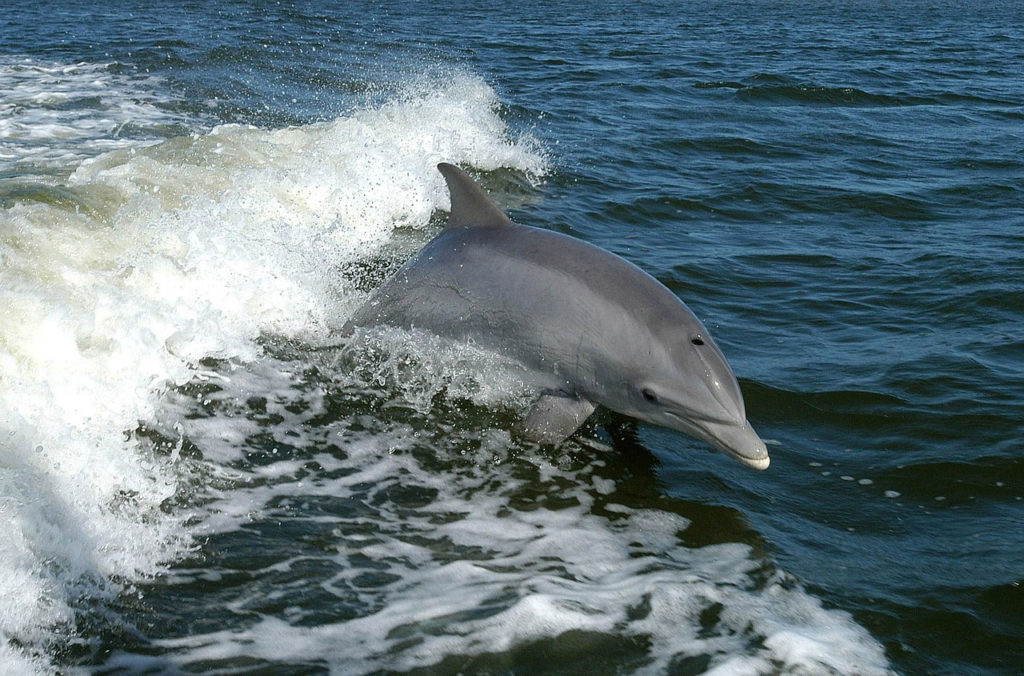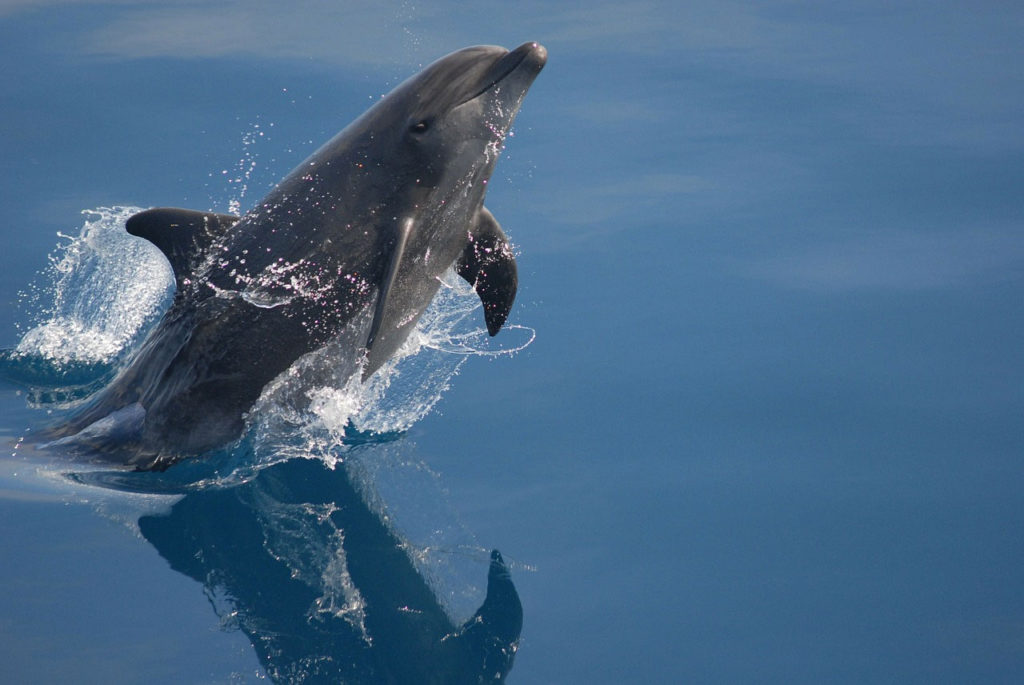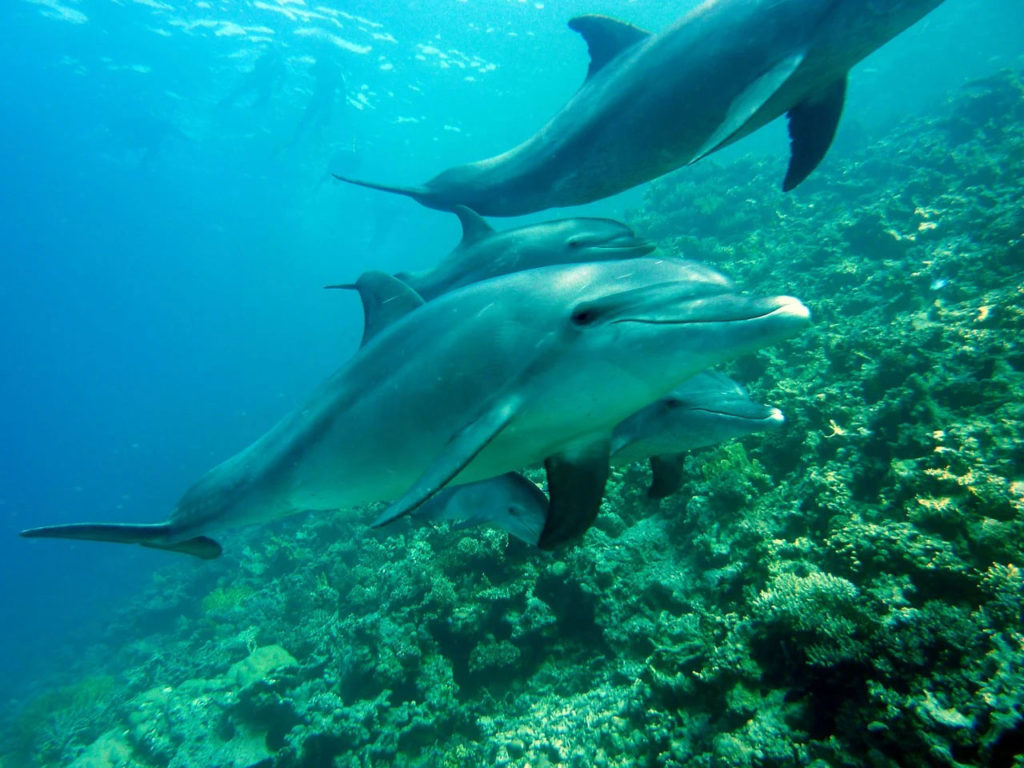With their never-ending smiles, Bottlenose Dolphins (Tursiops truncatus) easily capture our hearts. These large mammals grow to lengths of 10 to 14 feet and can weigh as much as 1,100 pounds. Their powerful bodies allow them to reach speeds of over 18 miles an hour. They can live to be 50 years old.
Bottlenose Dolphins can be found inshore and offshore, including in estuaries. They are easy to spot as they surface two to three times a minute to breathe. Bottlenose Dolphins live in a community called a pod. Here they communicate with each other with an elaborate system of squeaks and whistles. Their speech allows them to work as a group to help a sick or injured dolphin, encircle a school of fish for a community dinner, and guard the pod against a shark attack.
Using echolocation, Bottlenose dolphins make 1,000 clicking noises per second. The sounds of the clicks travel through the water until it bounces off their prey. When the sound returns, the dolphin can expertly determine the shape, size, and location of their next meal. Each day an adult dolphin can eat 20 pounds of flounder, mullet, pinfish, sheepshead, and marine invertebrates.
Feeding a dolphin or swimming with a dolphin can seem harmless. It is not. In fact, it is against federal law. Human interactions with these magnificent animals can cause them to be drawn to humans, thus putting them at risk of boating accidents, entanglement in fishing nets, and consuming food that jeopardizes their health. Dolphins will pass these dangerous behaviors to their next generation. Grab a camera, and sit back and enjoy them playing and leaping in their natural, wild habitat.



